Electric scissors
02 March 2021
Scissor lifts have been a backbone of construction sites for decades. Whether working outside on building façades or indoors on delicate slabs, scissors are a go-to choice for working safely at height in tight spots.
The core of a scissor lift’s main function might seem elementary – raise people and products up, bring people and products down – but like the rest of the construction industry, this sector is rapidly transforming.
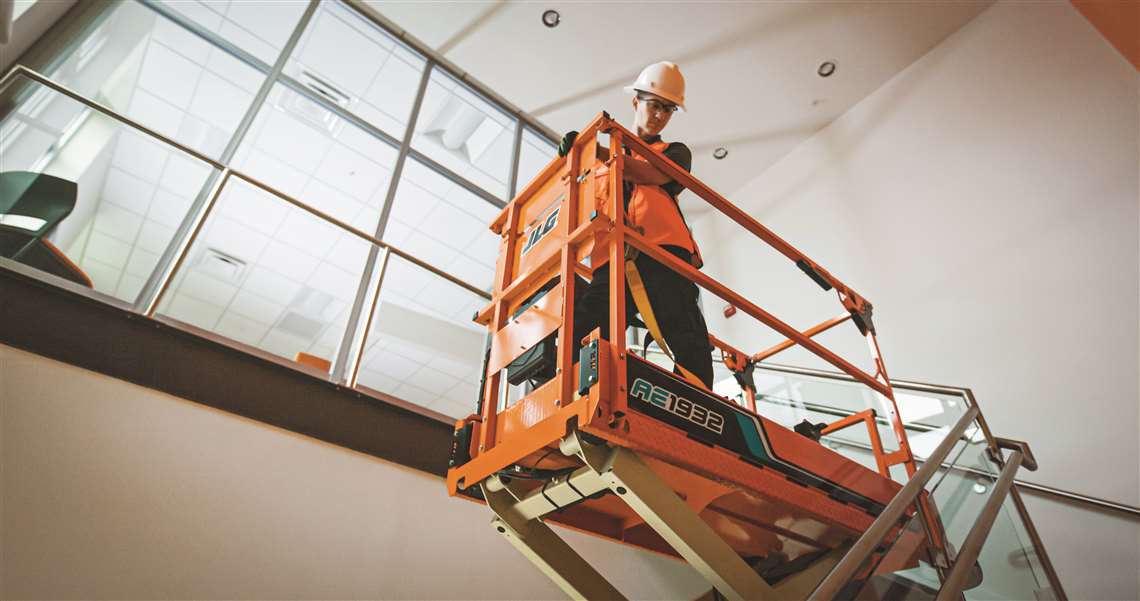
“Technology is continuously developing, and obviously, JLG is following this closely,” says Jennifer Stiansen, director of marketing for JLG. “We anticipate that lithium-ion batteries will become more affordable, and that the technology will become more accessible, therefore, there will be less need and demand for engine-powered models. This will be because the performance of a lithium-ion operated machine is equal to a conventional diesel-powered machine.”
JLG would know – in January, the company introduced the industry’s first all-electric scissor lift – the DaVinci AE1932.
Powered be a single lithium-ion battery, the DaVinci AE1932 has zero hydraulics, which eliminates leaks and makes it ideal for environments where stringent environmental restrictions exist.
“By eliminating leaks and selecting a battery that is anticipated to last the life of the machine (up to 10 years), we’ve significantly reduced the two most frequent reasons for service calls and maintenance,” says Stiansen. “There’s no other electric scissor lift like it on the market.”
Lithium-ion batteries, though more costly, reduce maintenance requirements and tend to charge faster and run longer on a single charge. The DaVinci charges three times faster than a standard lift, JLG says, and after only five minutes of charge, can provide 100 feet of driving and enough torque to load onto a truck.
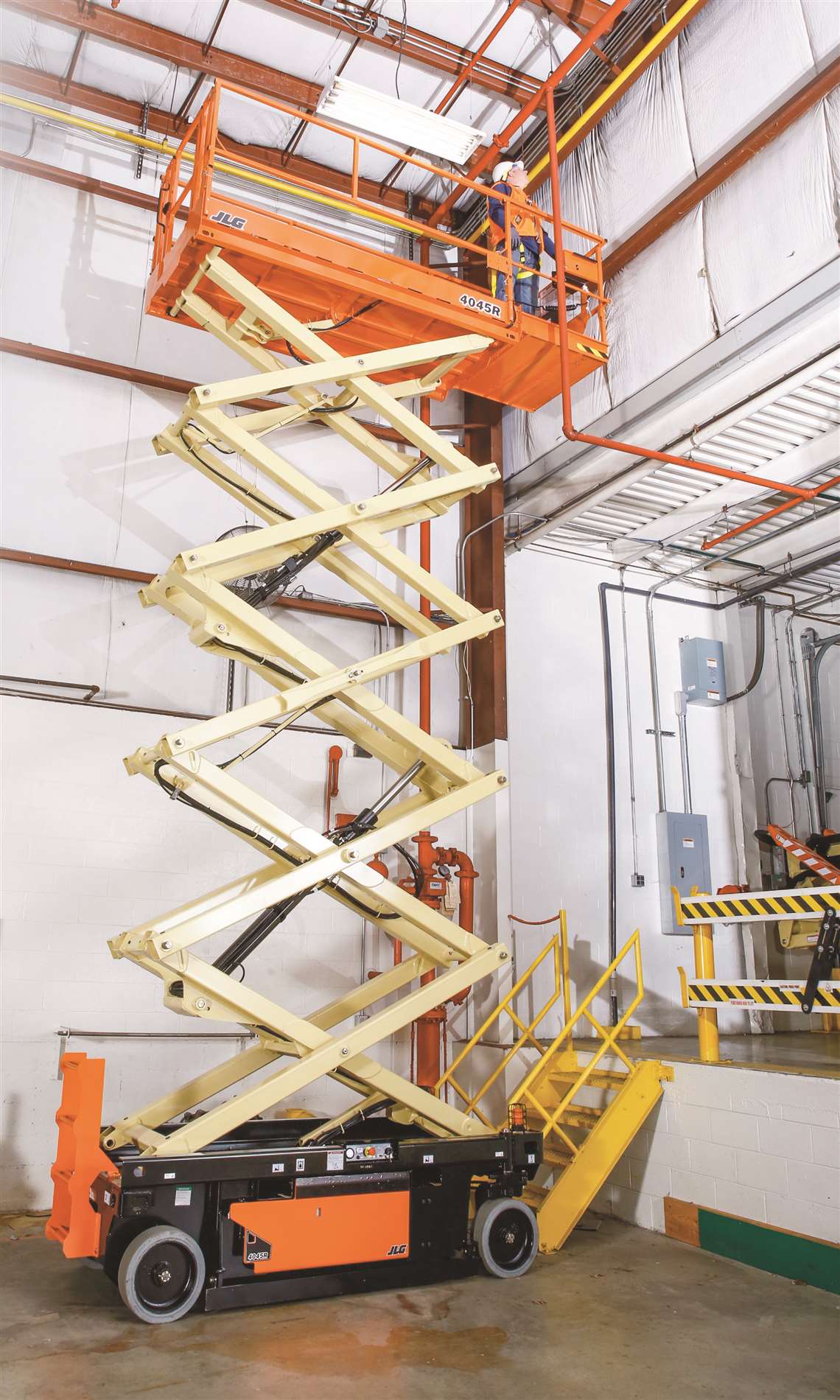
The scissor has a 4-mph stowed drive speed, which is two times faster than a typical scissor lift. While the battery itself on this lift is efficient, the engineering of the lift, with every part optimized prolongs the battery life, including what JLG says is an industry first: recovery of energy while the platform is descending. This contributes to a 70 percent decrease in power consumption for longer cycle times.
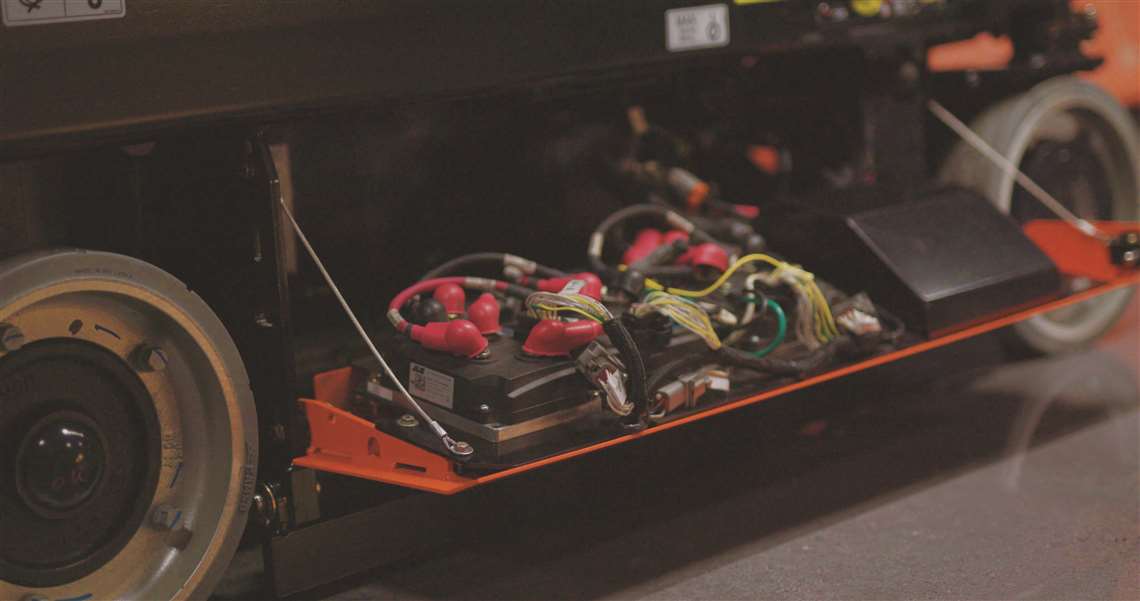 JLG’s power source for its new all-electric DaVinci scissor lift.
JLG’s power source for its new all-electric DaVinci scissor lift.
DaVinci uses a distributed architecture where each system (lift, drive and steer) is connected independently, helping reduce voltage drops and latency, while enabling the control system on the scissor to connect and communicate directly with each system.
Because the control system is fully connected to the entire machine, the DaVinci scissor can transmit data back to operators, fleet managers and service technicians via Bluetooth and cellular networks. This sets the stage for new features like the DaVinciGo app, Stiansen explains.
“The JLG DaVinciGo app was developed to provide real-time machine health and battery status information to the operator and provides the ability for service technicians to perform remote diagnostics and push over-the-air software updates when required to maximize the machine’s uptime and onsite productivity,” Stiansen says.
But is there an industry demand for such a high-tech, green machine?
“There are several different drivers propelling the industry toward electrification, but increasingly, we see demand for greener and more versatile machines,” Stiansen says. “Legislation is a driver for electric and hybrid, but TCO is also playing a role in this trend. Especially because the rental companies are always looking to improve their fleet’s TCO.
“By offering simple, fully electric, lithium-ion powered machines, we are reducing TCO. We dramatically reduce maintenance costs. In fact, they are pretty much maintenance free compared to the maintenance required for a diesel engine. This is a very important point in discussions with our customers.”
Stiansen adds a last key point: The maintenance costs for diesel engines are going up due to the introduction of Stage V standards in Europe, particularly because of the diesel particulate filters (DPF) they require. With lithium, the battery costs are coming down, due to it becoming more popular, this option will become more popular — and most likely, more requested — in aerial equipment; whereas, because diesel costs are going up incrementally, the industry could expect to see less demand for IC-powered models.
Diesel-free future?
Skyjack has produced both electrically driven and diesel-powered machines for quite some time, because, simply put, there is a market for both.
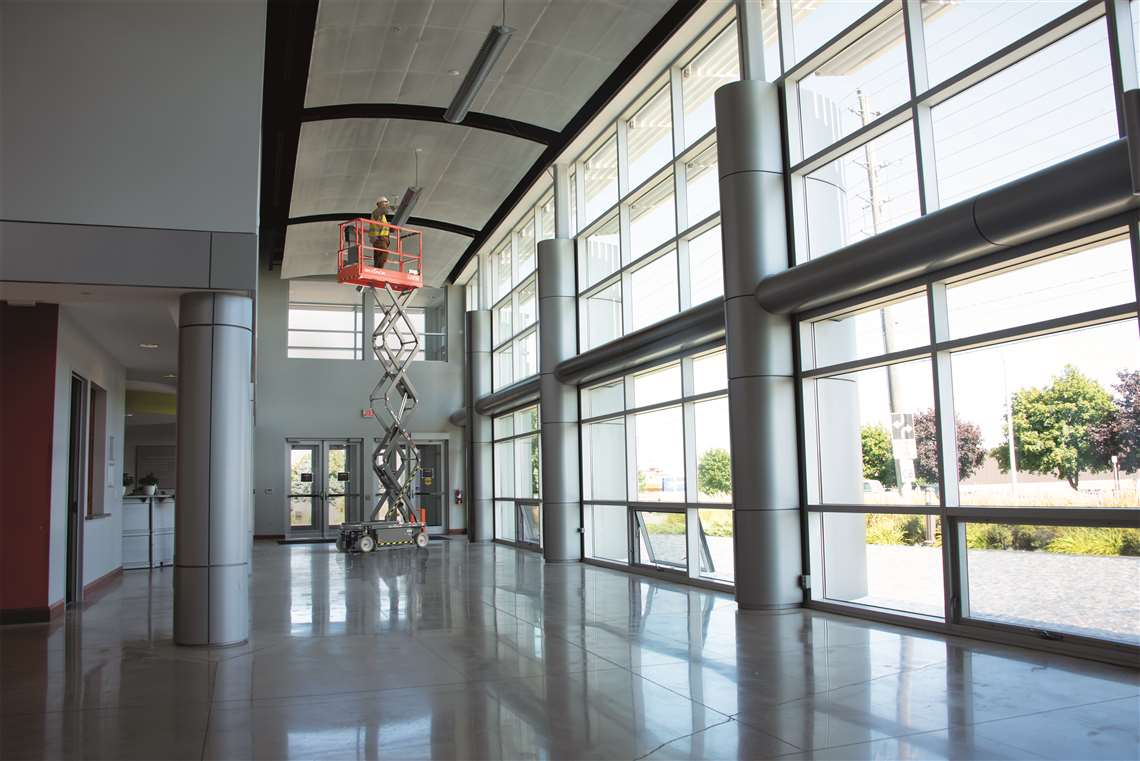 Skyjack uses its Elevate telematics system to continually improve its products.
Skyjack uses its Elevate telematics system to continually improve its products.
The company recently spearheaded an industry-wide battery management study and published the results in 2020. By using its Elevate telematics system on its electric scissors, Skyjack discovered exactly how batteries are treated and how they perform in the field.
“With proper charging practices, our batteries have the capacity to last around three to four years, however, our study found that our equipment goes 21.5 days between full charges,” Schdmit explains. “Because of this charging behavior, we’re seeing an industry average of only one and a half to two and a half years for a battery’s lifespan.”
Skyjack took that data and information and designed its Elevate Battery Management System, which provides rental companies and end users with insights needed to take action on certain charging behaviors so they get the full three to four year battery lifespan.
“The key driver with this added technology was targeting the largest operating costs on scissor lifts by reducing battery pack replacement,” Schmidt notes.
But could this phase-out diesel scissors?
“We don’t see ‘green machines’ ever fully replacing diesel-powered machines due to lack of site electricity during initial construction,” explains Kristopher Schmidt, product manager for Skyjack. “For larger electric machines, a power supply is needed on-site during pre-construction, and that typically comes from a diesel-powered generator, which slightly counteracts the machine’s benefits. There’s also an ROI equation to consider, the initial acquisition cost for large electric machines is typically higher than their diesel-powered counterparts, and end users aren’t willing to pay higher rental rates for an electric machine, which prolongs the timeline for rental companies to see that positive return.”
Endless opportunities
Snorkel, on the other hand, can envision an electric future.
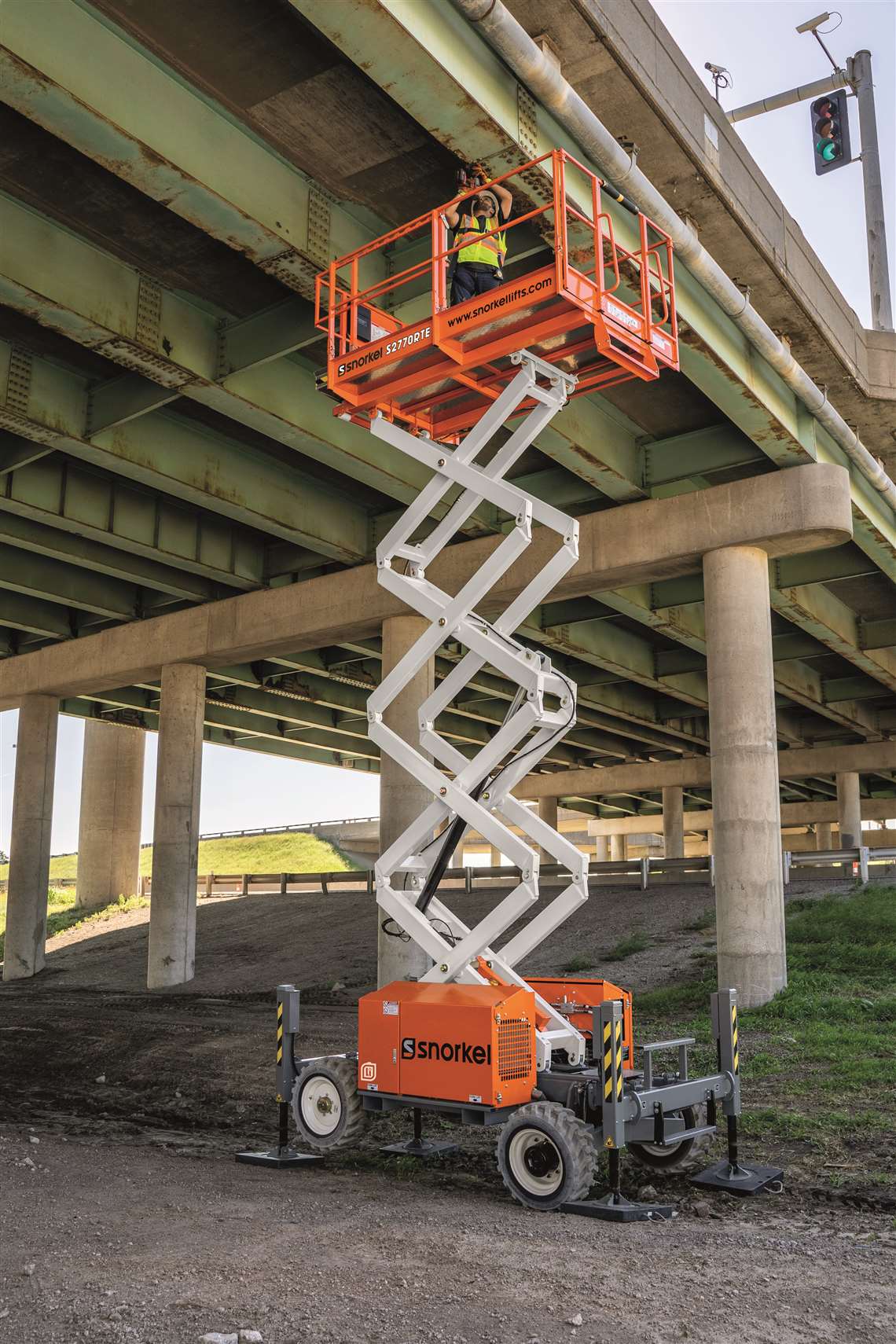
“From a technology standpoint, lithium-electric battery powered lifts in the mid-size categories could certainly replace diesel powered units completely,” says Matthew Elvin, CEO of Snorkel. “The current challenge is that lithium-ion battery power is more expensive than a diesel engine, which ultimately increases the purchase price of the unit. While the total cost of ownership is actually better on the lithium-ion powered units over the life of the unit, it is the purchase price which is normally the focus for our rental customers. As such, we are seeing a large proportion of the lithium-ion product adoption coming from contractors who purchase the lifts and will benefit from the lower total life costs, running the unit for many years.”
Elvin says in the rental sector, Snorkel has many customers that have embraced the lithium-ion powered lifts and have set themselves fleet emission-reduction goals. This is particularly prevalent in Europe and Scandinavia, where there are also greater emissions regulations from government, and in some cases, mandatory zero emission zones in cities, where electric-powered equipment must be used.
Capable of working a full shift between charges, Elvin notes, the Snorkel lithium-ion battery powered compact rough terrain scissor family utilizes the same lithium-ion maintenance-free battery packs with built-in battery management system (BMS) and integrated electric powertrain as the electric Snorkel Speed Levels. The scissor lifts deliver 4-wheel drive performance with zero emissions, while reducing running costs by up to 95 percent when compared with an engine.
The units are equipped with two lithium-ion battery systems as standard, and the low voltage system is easily serviced, without the need for specialist high voltage training, and has been tested in climatic chambers between -77°F and +140°F. A high frequency, smart, on-board 50A battery charger enables the lift to be fully charged within five to eight hours, and it can be top-up charged throughout the day, as required. An optional 111Ah battery system can be added for increased range between charges.
“So far, lithium-electric batteries are predominantly being used as a direct replacement to diesel engines, providing electric alternatives,” Elvin says. “However, lithium-ion batteries are also an alternative power option to lead-acid batteries which are commonly used, including by Snorkel, to power electric slab scissor lifts.
“A possible trend may be that lithium-ion batteries will be more widely used in these smaller scissor lifts, to extend duty cycles, eliminate battery maintenance, and more closely match the charging habits that we are familiar with on personal electronics, such as our mobile phones. While battery cost may reduce widespread adoption, it could be a welcome solution in certain sectors, such as retail, industrial, clean room and hospitality environments.”
Productivity is key
Over the last few years, there has been increasing jobsite demand for productive machines that are also clean machines, according to Genie.
“Electric drive systems have historically been challenged by the tough conditions found on jobsites,” says Mike Flanagan, product manager at Genie. “The key is when electric or hybrid units are able to deliver the same performance as diesel powered units. Genie E-Drive slab scissors are designed to face real world conditions, using similar motors that are used on the all-terrain Genie Z-60 FE hybrid electric boom. Genie E-Drive scissor lifts deliver the performance customers need most, with real-world 25 percent gradeability.”
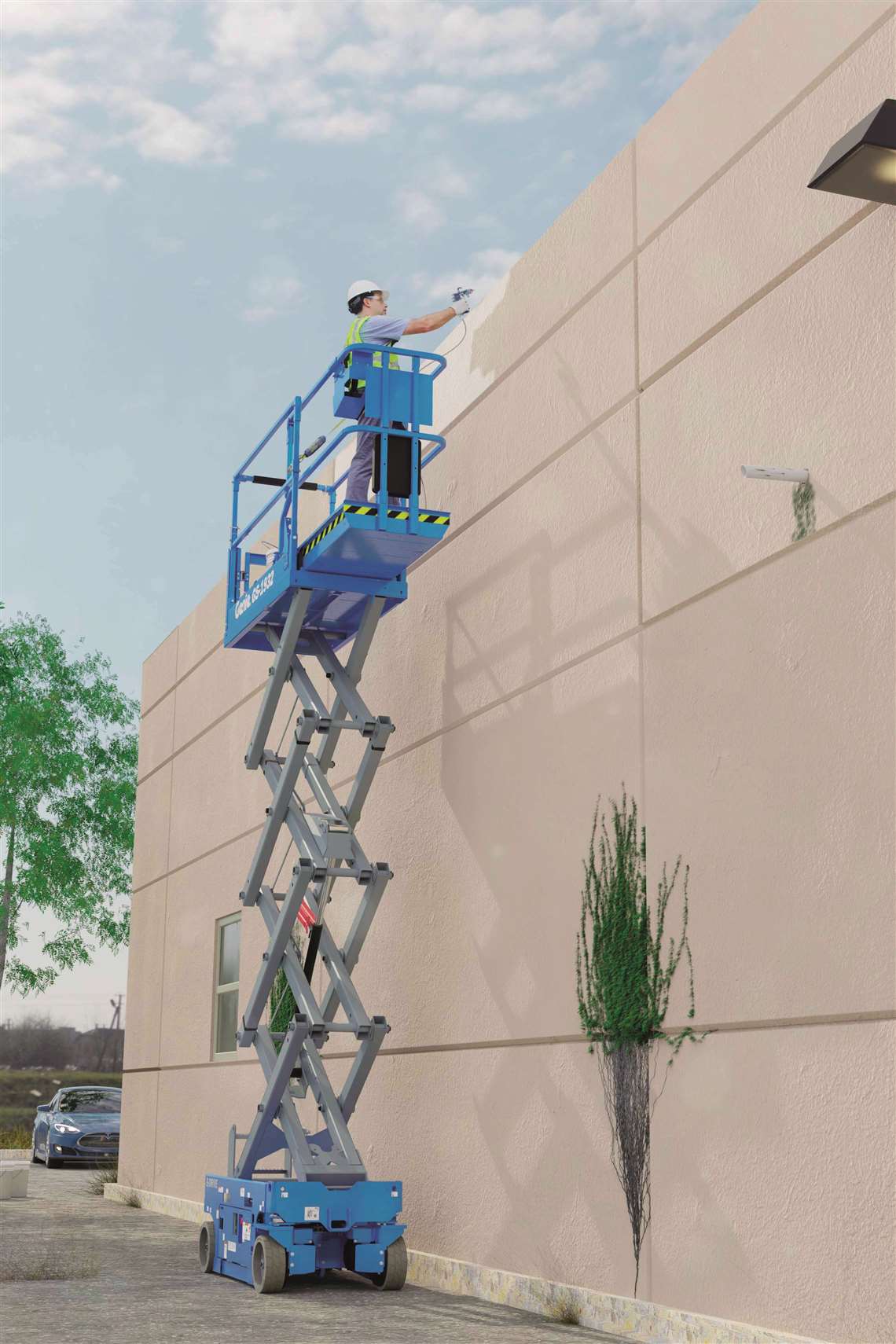
Genie E-Drive slab scissors are equipped with flooded lead acid (FLA, or flooded) batteries of varying size, depending on the model. With AC electric drive systems, Genie E-Drive slab scissors can deliver up to 30 percent more runtime than their hydraulic drive counterparts, Genie says. Additionally, some Genie E-Drive slab scissors are designed to accommodate smaller batteries than their less efficient hydraulic drive counterparts, while still delivering significantly more runtime and reducing lifetime maintenance costs. Charge time can depend on many factors, including battery type, charger type and depth of discharge, but is typically less than 10 hours for a full charge.
“One of the major improvements in slab scissor applications surrounding batteries and charging has been the increase in telematics solutions that can help deliver actionable data to fleet managers and owners,” Flanagan says. “With Genie Lift Connect, for example, managers can identify machines that have been left unplugged before the end of the shift, preventing lost time on the jobsite the next day. Additionally, Lift Connect can provide insight to technical service team members, allowing them to troubleshoot machines remotely and determine if the cause of a down machine is due to a dead battery, interrupted charge or failure to charge.”
Uptime
Rebecca Yates, material handling product manager at JCB, believes the electric scissor market will continue to be very competitive – which means product quality and long-term ROI will be most important to customers and end-users.
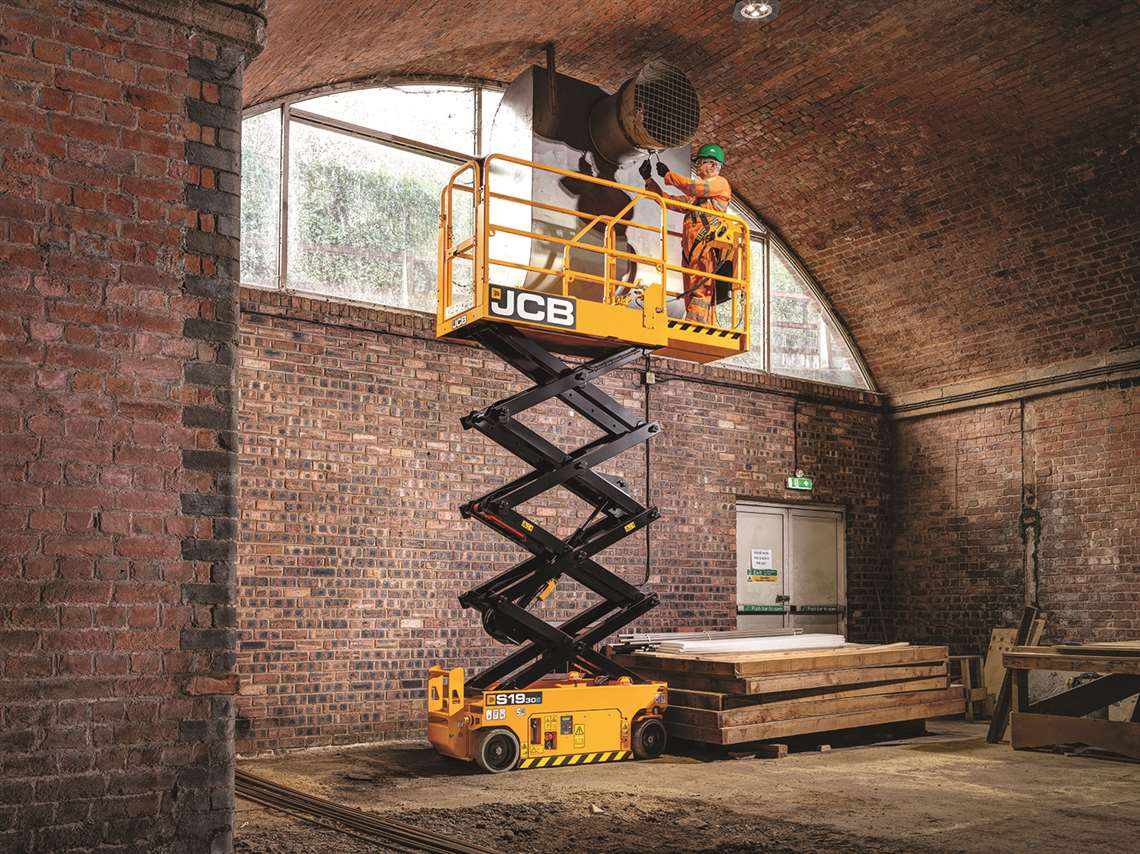
Adding to that, Yates says, are how “telematics, like JCB LiveLink, are invaluable as they provide health, service and location information that is vital to the operator. This kind of information about their machine’s status helps an operator proactively manage any potential issues which leads to increased uptime.”
Uptime and productivity on any site are of utmost importance to contractors and end-users alike. Take, for instance, work within a hospital.
“A hospital can’t shut its doors and wait for renovations to be complete, so it’s pertinent to utilize equipment that can be operated quietly and fume-free, without worrying about causing additional structural damage or restricting the day-to-day functions of the facility,” says Justin Kissinger, marketing manager for Hy-Brid Lifts. “In 2020, we introduced our first outdoor-rated [electric] lift that allows more versatility moving around jobsites.”
Hy-Brid Lifts, which has been a core manufacturer of electric scissors, believes the growing push for electric machines will see competition in the sector rapidly grow.
“We see potential in the current push of electrification to begin chipping away at the market share of diesel power,” Kissinger says, adding: “More manufacturers will begin to saturate the market by modifying their current designs to quickly provide a product.”
No shortage of suppliers
LGMG North America’s electric scissors use Trojan lead acid batteries along with lithium ion batteries. Charge times range from one to six hours depending on battery size and type, the company says.
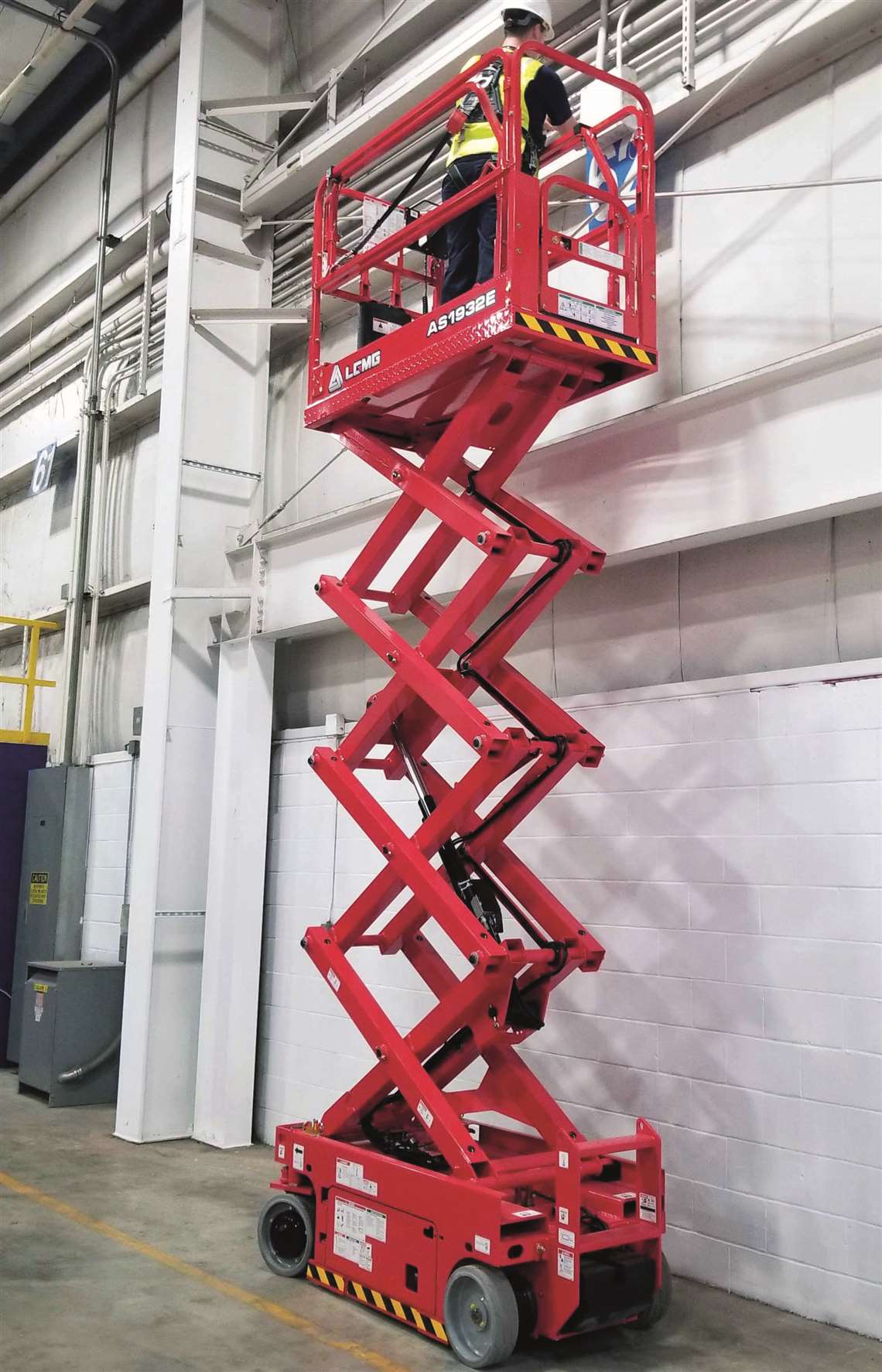
“In time, electric-powered scissors of all sizes will replace diesel on the majority of jobsites,” says Rusty Kaylor, senior vice president of LGMG North America. “We have already replaced several diesel-powered rough terrain and high weight capacity machines with our SR3369E, SR4069E and our new SR5390E drivable at full height. These units are becoming extremely popular on manufacturing and warehouse distribution projects.”
In early 2020, LGMG North America and Pettibone announced an agreement that LGMG would manufacture aerial products for Pettibone, including electric scissor lifts.
Mitch Fedie, marketing manager for Pettibone, says advancements in technology will continue in the scissor sector.
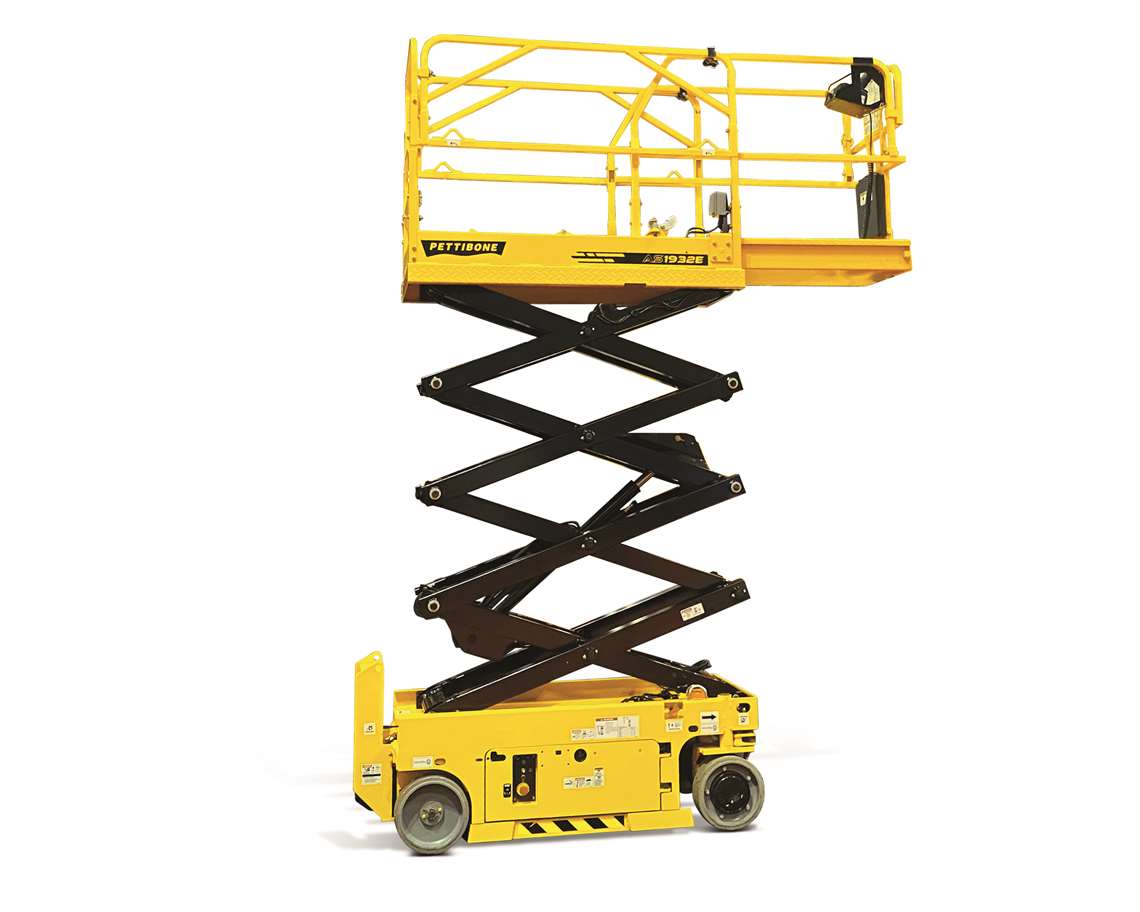
“I think you will continue to see increased utilization of telematics on electric scissor lifts over the next year,” Fedie says. “More and more rental companies and end users are adding telematics to their fleets to not only track machine locations, but monitor utilization rates, track machine maintenance schedules, and remotely diagnose and troubleshoot machine issues.”
Pettibone is keeping its eye on battery and charging technology, Fedie notes, and with increasing stringent emission and environmental standards, the demand for electric-only scissors will grow.
“I think it is inevitable that electric-powered units will eventually replace diesel-powered scissor lifts,” Fedie says.
But Huang Bin, product manager of scissor lifts for Zoomlion Intelligent Access Machinery Co., Ltd., isn’t so sure.
“Although electric-powered models can work efficiently with zero emissions and low noise, it takes less time to complete fuel make-up for diesel-powered units than electrified ones in some jobsites where continuous operations are required,” Bin explains. “Therefore, we believe ‘green’ machines are a trend in the market [and] they will not fully replace diesel-powered units.”
Zoomlion scissor lifts are equipped with lead-acid and lithium ion batteries, and the company expects lithium ion power to eventually replace lead acid. It also sees a future where all units use AC drive instead of DC.
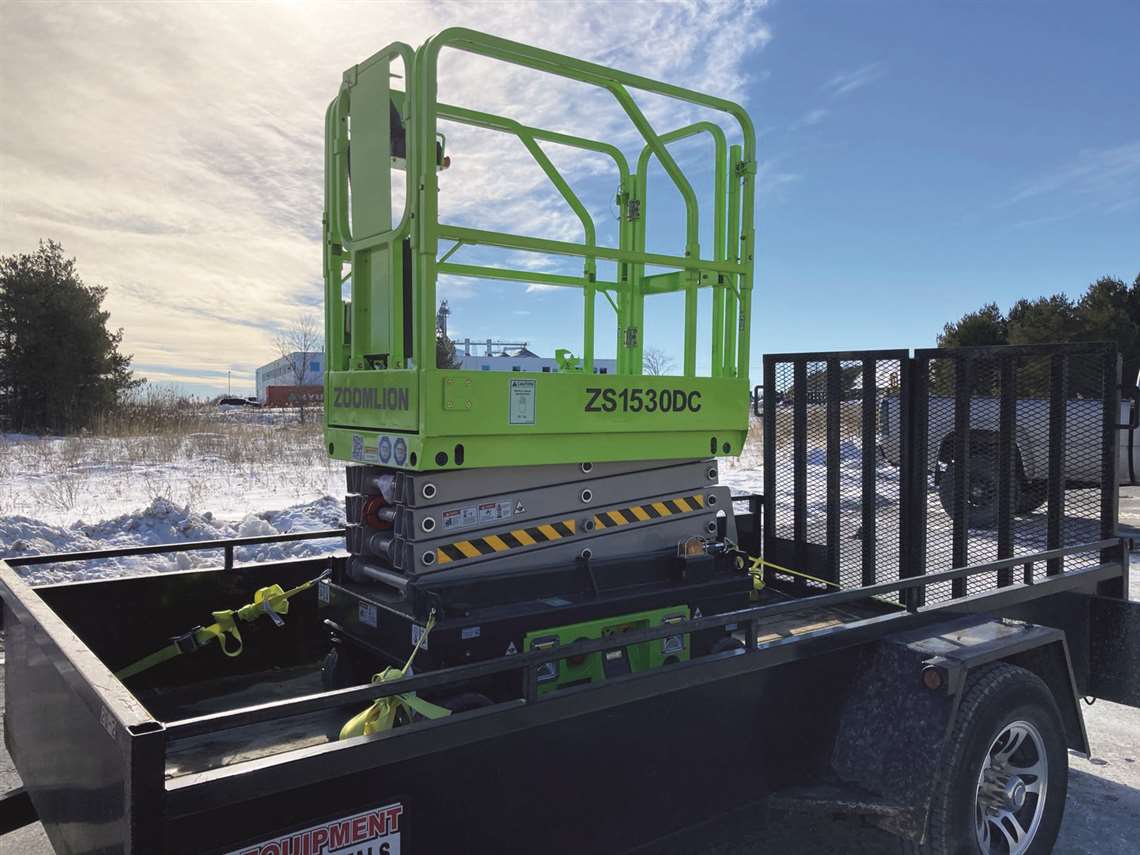
“Based on the future trends, the AC motor will be configured in our whole DC series in 2021,” Bin says. “Plus, combining the advantages of lithium batteries, it is expected that the electric-powered scissor lifts without hydraulic systems will be launched in the near future and built in more safety configurations to improve operation comfort.”
STAY CONNECTED




Receive the information you need when you need it through our world-leading magazines, newsletters and daily briefings.
POWER SOURCING GUIDE
The trusted reference and buyer’s guide for 83 years
The original “desktop search engine,” guiding nearly 10,000 users in more than 90 countries it is the primary reference for specifications and details on all the components that go into engine systems.
Visit Now
CONNECT WITH THE TEAM










